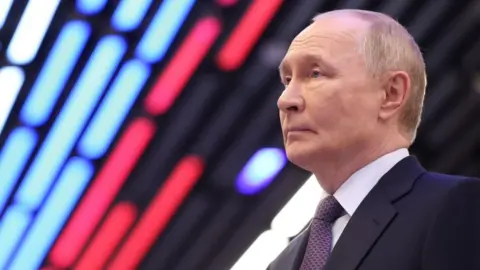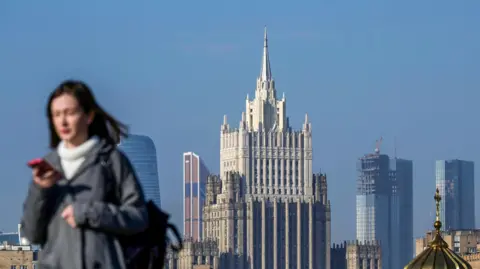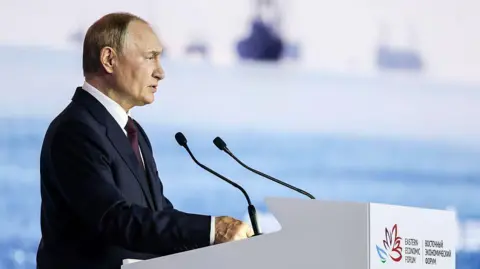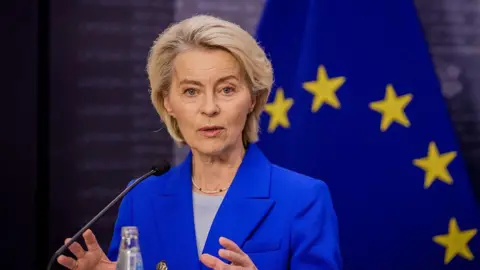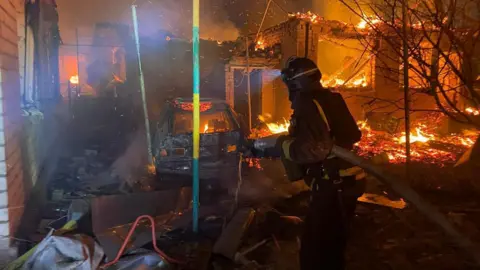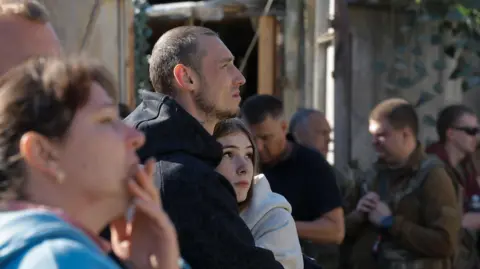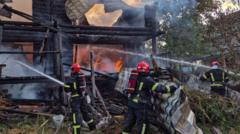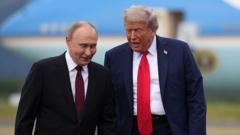Ukraine has dramatically increased the number of attacks launched against Russian oil refineries in recent months, sparking fuel shortages and price rises in some parts of the country, BBC Verify and BBC Russian have found.
Drone strikes on refineries - some deep inside Russia - soared in August and remained high in September, an analysis of Russian media reports and verified footage showed.
Some 21 of the country's 38 large refineries - where crude oil is converted into usable fuel like petrol and diesel - have been hit since January, with successful attacks already 48% higher than the entire year of 2024.
Ordinary Russians appear to be feeling the impact of the strikes, with verified videos showing long queues at petrol stations. Some garages have suspended operations to wait out the crisis rather than work at a loss, one manager told Russian media.
Ukraine's security service, the SBU, did not respond to a request for comment. However, President Volodymyr Zelensky has characterized damaging Russia's oil industry as a crucial means of forcing Russia to the negotiating table.
The most effective sanctions – the ones that work the fastest – are the fires at Russia's oil refineries, its terminals, oil depots, the Ukrainian leader said in a September address. We have significantly restricted Russia's oil industry, and this significantly restricts the war.
Our analysis shows reported attacks reached a record level in August, with 14 refineries targeted by Ukrainian drones and eight in September. The increase followed a brief lull coinciding with diplomatic attempts to broker a ceasefire deal between Kyiv and Moscow.
Some of the strikes have been launched against facilities deep inside Russia. In late September, the SBU successfully hit the Gazprom Neftekhim Salavat oil refinery in the Bashkortostan region twice, with satellite images showing smoke billowing from the facility - located more than 1,100km (683 miles) from the Ukrainian border - after the attack.
Kyiv has also targeted some of Russia's most lucrative facilities. A refinery near Volgograd has been hit six times this year, with an August attack forcing it to halt operations for one month. The large Ryazan plant near Moscow, capable of producing 340,000 barrels per day, has faced five strikes since January.
Ukrainian strikes appear to pursue two objectives: to disrupt large refineries essential for civilian supplies and to impair those closer to the border that supply troops in Ukraine, according to Vladimir Milov, a former Russian deputy energy minister and charted opposition politician.
Justin Crump, an ex-British army officer and CEO of the risk consultancy Sibylline, noted that Ukraine has long targeted Russia's oil and gas industry. With the latest strikes showing a concerted campaign focus, Crump asserted, This campaign has obviously been the focus of significant investment and is driven by an intelligence assessment of what will hurt Russia the most.
Although Russia has faced traditional price increases due to summer travel and maintenance, the drone strikes have exacerbated the situation. Retail petrol prices have surged, and wholesale prices have risen by 40% since January. Reports of rationing in occupied Crimea and disruptions from petrol stations across Russia indicate that the crisis is tangible.
While officials in western Russia largely report feeling unaffected, Kremlin spokesperson Dmitry Peskov maintains that the situation is under control, and measures are in place. However, Deputy Prime Minister Alexander Novak announced a partial ban on petrol exports extended to the end of 2025, although some see this as insufficient to stabilize the domestic market.
Long-term implications of the strikes on Russia's military funding remains uncertain. While much of Russia’s oil is exported as unrefined crude, which has not been significantly impacted by strikes, the enhanced attacks could weaken Russia’s war efforts in the long run.










